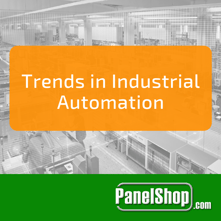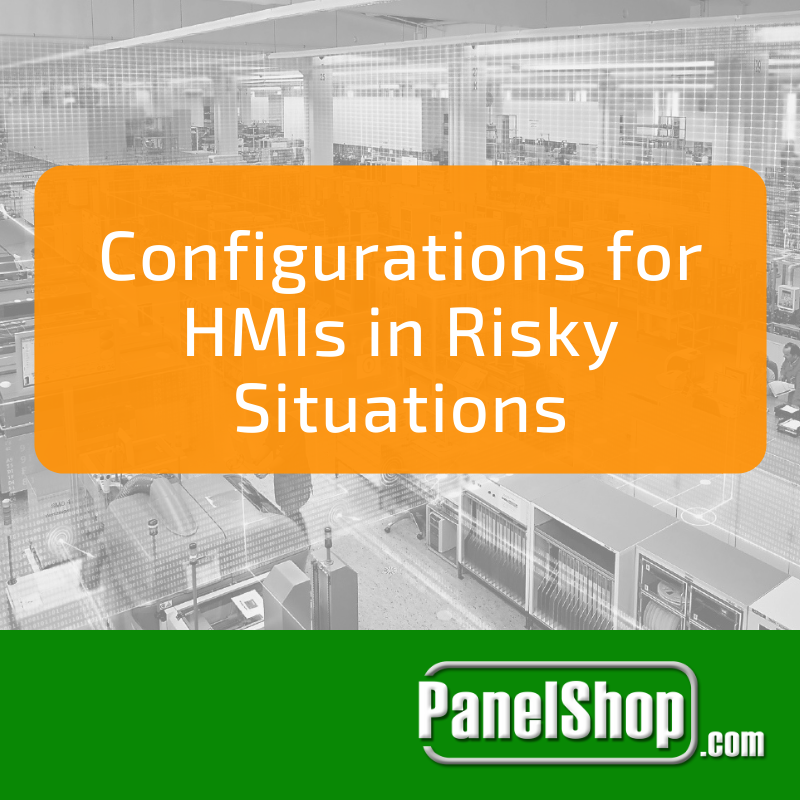The world we live in is ever-changing and fast-paced through the advancements of technology. With tremendous strides and continuous progress that occurs monthly, industrial automation puts technology to full use. Automation can entail many things, from a simple start-stop conveyor system to a full production line with safety systems, data collection, and more. Swift progress in automation and technology has led us to IoT 4.0, also known as the industrial internet of things 4.0.
Examples of Industrial Automation 
Automation can vary greatly depending on the process and degree of automation being demanded. A basic example would be a conveyor system. To a simplistic degree, the system would incorporate a start-stop arrangement and sensors. The start-stop circuit would allow for automatic control of the motor driving the conveyor. Sensors along the conveyor, positioned at particular points, give signals to the main controller. With these signals, the controller, such as a programmable logic controller (PLC), can turn the conveyor on or off. An employee or group of employees no longer must divert their attention to the conveyor system, worrying if it is full and needs to be stopped. They can focus on packaging and other duties that progress the workflow. To increase the automation of this conveyor line further equipment and programming can be added. Variable frequency drives (VFDs) and further programming can increase the conveyor system’s production, safety, and quality. With the additional programming and equipment, such as the VFD, the conveyor can run at varying speeds, detect damaged products traveling the conveyor, and gather data for analyzation. Robots can be added for palletizing and material handling. The limitation of automating a simplistic conveyor system are seemingly endless and begin to open the doors of introducing industrial automation.
What is IoT?
The industrial internet of things (IIoT) is prioritized in the manufacturing industry. This concept has the basis of automating manufacturing to allow for an advanced, simplified, and analytical approach. IoT allows companies to not only automate processes but also equips establishments with the tools to gather, review, and store data that can be utilized to improve processes. Amazon may be the best representation of IoT 4.0. This company utilizes robotics to fulfill orders alongside data collection of warehouse quantities, shipment flow, and more. By incorporating IoT 4.0 into plans, it augments a firm’s strengths and distinguishes weak spots that can be improved.
IO-Link
A newer serial communication protocol, IO-Link, is utilized in large parts by PLCs and their automation processes. This recognized communication protocol, IEC 61131, supports a robust and quick transfer of data that shares device identification, service data, processes data, faults, digital signals, and more. IO-Link, also hyphenated as IOL, is a growing industrial standard and is being integrated with increasing frequency in automation. Communication cycle is usually around 2ms and contain packet sizes of 1 to 32 bytes. The advantages of IOL is that it allows a simpler installation, increased operating efficiency, and the ability to reduce maintenance stress. Standard IO-Link devices require a 3-wire cable - power, neutral, and an additional wire for the IOL data transfer. The need of custom cables or connectors are not present, furthering the ease of install and maintenance. This bi-directional, point-to-point communication does require some additional setup in the PLC programming suite, but it is nothing to fret about. IO-Link devices require IODD, IO device description, file(s) and an IOL master module such as Allen-Bradley’s 1734-4IOL. Lastly, IO-Link allows an in-depth diagnostic visibility as to what is happening with field devices. With valuable insight engineers and maintenance personnel can better respond to issues occurring.
Machine Learning
Machine learning is synonymous with industry or IoT 4.0. Machine learning does not correlate to futuristic robotics that are walking and talking. Instead, machine learning is when systems that are fed accurate, real-time data process it and react accordingly. This sounds straight-forward and may be what is happening in your plant already. However, a system’s ability to recognize this data and deduce varying conclusion help manufacturers and other industries thrive. This is not a set program that continues its cycles but instead it assists with aspects such as inventory management, warehousing cost reduction, asset tracking, supply and production forecasting, and more. The machine learning’s artificial intelligence (AI) provides an automated learning ability that solves issues without an explicit program. These machines or systems learn on their own as they are continuously fed data. Machine learning methods usually fall into one of the following; supervised machine learning algorithms, unsupervised machine learning algorithms, and reinforcement machine learning algorithms. Supervised machine learning algorithms is when the machine or system has an existing data sheet with examples to utilize. As it is fed information, the AI analyzes it compared to the know datasheet, produces a conditional output, compares the output to the training dataset for errors and modify it accordingly. Unsupervised machine learning is when the AI does not have a training dataset to base its findings on. Instead, as information pours in the machine or system explores the figures to draw extrapolations. This is sometimes the best way for companies to highlight cost reductions and forecasting as the AI quickly begins to correlate the best, or worst, figures. Semi-supervised machine learning falls in between the previous two. Some small training dataset is established for the AI machine learning; however, it is a small amount. This method is usually chosen when the training dataset requires great skill, time, or relevant resources to gather it all. However, a small amount of labeled data or a bulk of unlabeled data allows the machine to quickly improve its learning accuracy. The reinforcement machine learning method is when the AI interacts with an external environment. The AI discovers its errors or success through a trial and error submission of its output data. This allows the machine to identify the ideal behavior and environment that it is in and maximizes its performance based on the rewarded success or error rate of its output information.
Collaborative Robots (Cobots)
Collaborative robots, or cobots, are gaining traction in the industry, albeit slowly. Robotics and automation have been synonymous for quite some time, but collaborative robots are newer. Collaborative robots had the intention of putting people and humans side by side in the workforce. Traditional robots need safeguarding such as light curtains, area scanners, and even physical barriers to keep humans from injury or even fatal accidents. Cobots are built to work alongside us. However, one issue with cobots is that they have a smaller workload and move at a much slower rate of speed. Because of this, manufacturing overhead suffers. Cobots are dependent on the application they are being installed in, tailored to a working partnership with human beings. Assisted product movement, slow-paced, mundane task completion, and other task are ideal for them. The highlight for cobots is that they have found their way into restaurants as of late, being designed and implemented to flip burgers and other actions.
Interested in learning more? Visit our website www.premierautomation.com, or talk to one of our specialists today.
Contact Us





